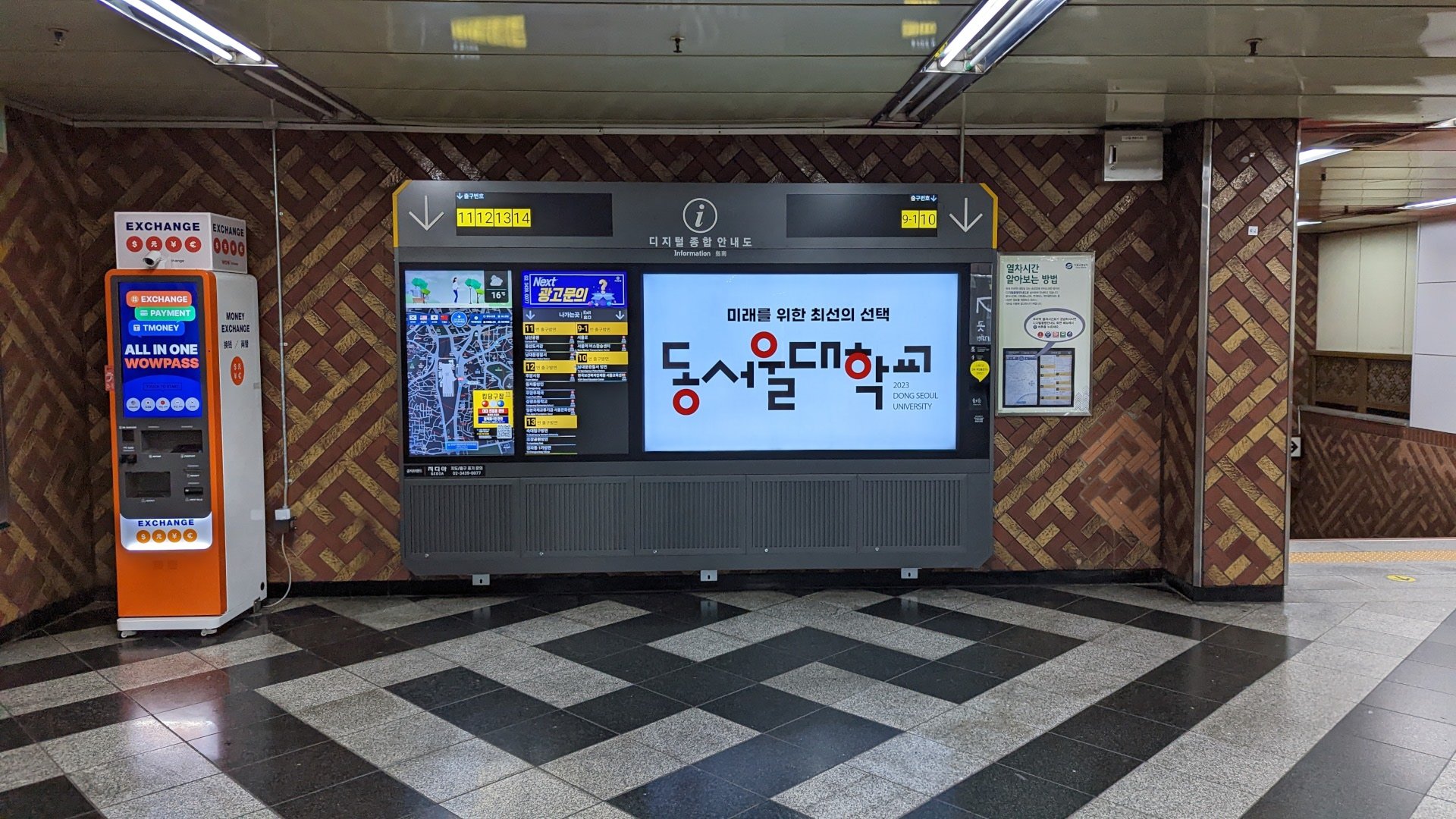Seoul | DooH in the Seoul metro is omnipresent, big, loud and not very standardized. More than eight million daily passengers who cannot escape the thousands of DooH screens of various technologies and DooH media owner. In 2019 Seoul Metro started the process of standardizing and tightening DooH regulations inside the stations and onboard the trains. DooH will be more structured but definitely won’t become boring. An invidis report from Seoul
When we asked inhabitants of South Korean’s capital about digital out-of-home advertising, most people mentioned the impressive above-ground LED screens on facades along central traffic axes. But as is often the case, the real (marketing) treasure lies underground. More than eight million passengers use the 300 stations in the city center and over 600 train stations throughout the capital region every day.
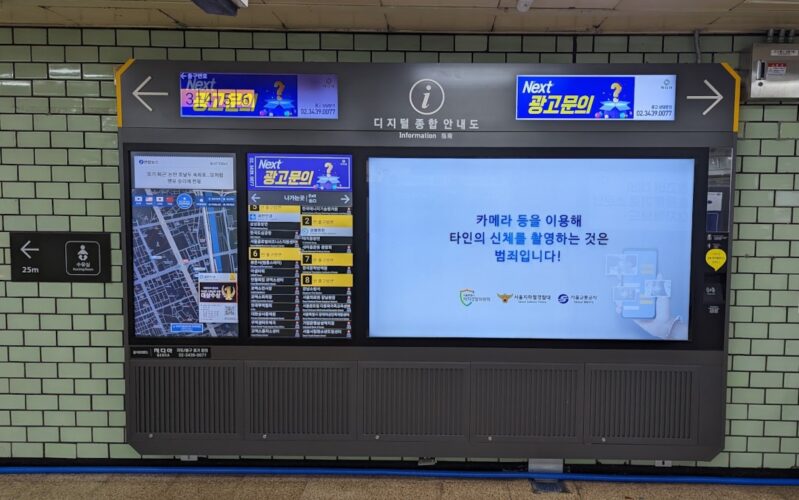
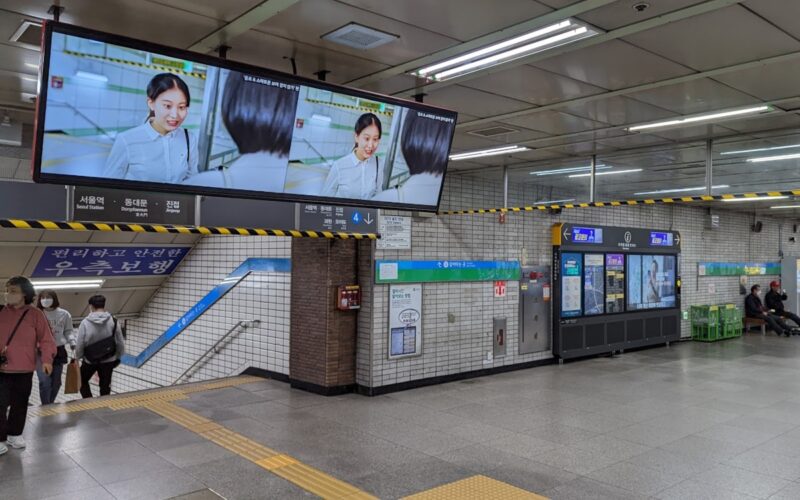
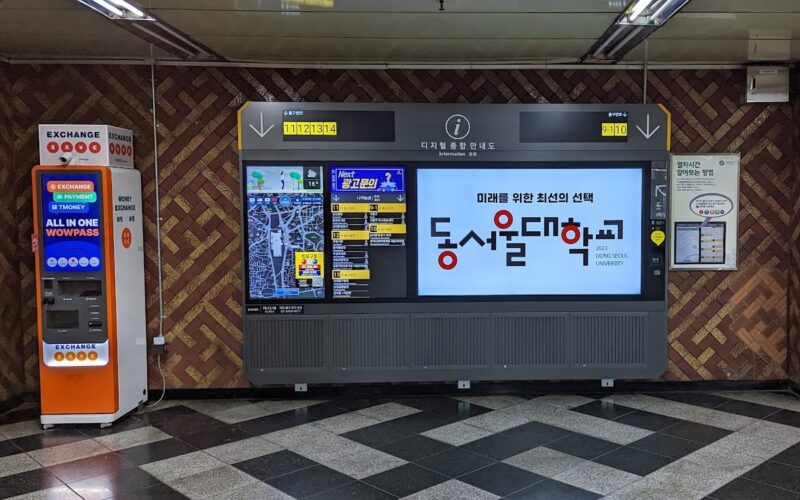
LCD Screens and LED walls are everywhere – mostly a wild mix of dated technology with a huge difference in quality and resolution. Since 2019, Metro Seoul has been standardizing advertising space. To date, backlit posters, outdated screens and LED surfaces have been replaced with over 4,200 standardized DooH screens at the 90 stations on lines 1-4.
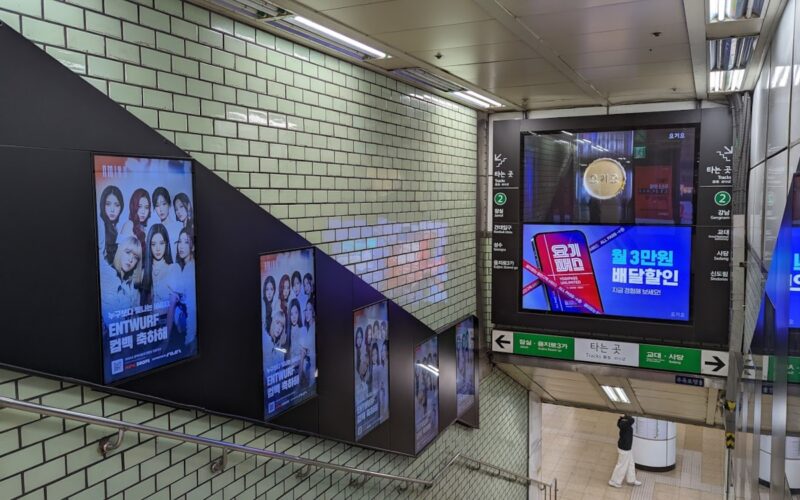
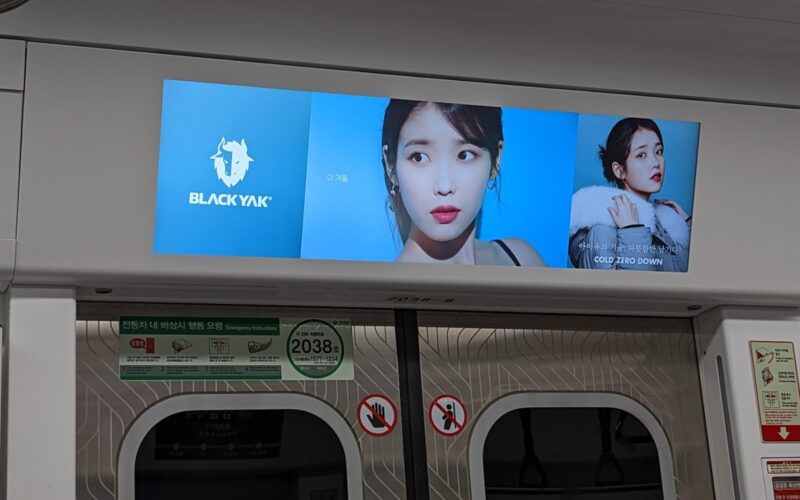
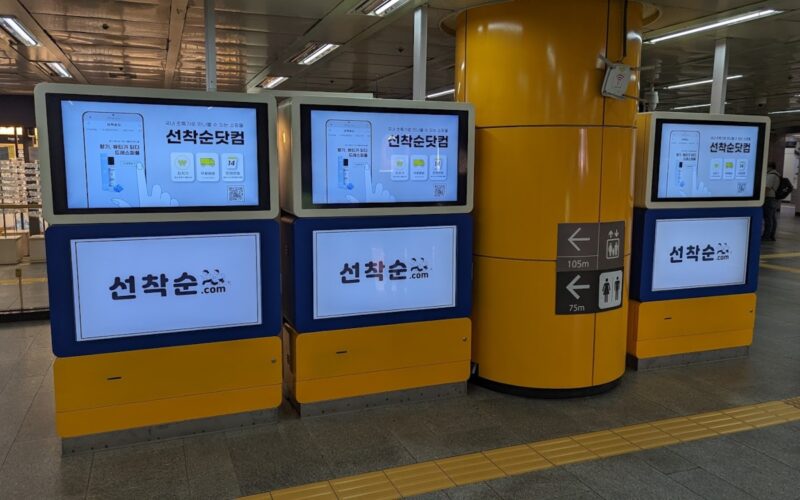
Multifunction on multi-screens
Samsung won the tender in 2019 with a modular display system that integrates metro information, interactive wayfinding and DooH in a robust housing. As a rule, three 49” touchscreens are installed in portrait mode, in larger stations supplemented by a 65” screen in landscape orientation. Two small way-guiding stretched screens at the top display both the exit number and advertising. The Samsung Smart Signage screens are fitted with a matte display, are IP5X dust and water-proof and offer more than 500 nits of brightness.
In contrast to Europe, Seoul’s DooH screens also fitted with speakers. The soundtrack for DooH advertising is difficult to understand during rush hour. The Samsung totems not only have integrated speakers, but also a charging tray for wireless charging of mobile phones. A clever, vandalism-proof solution that can be immensely helpful because the majority of commuters use a smartphone ticket, checking in- and out with the phone.
Highly frequented stations also offer large, non-standard LED and LCD video walls at entrances and exits.

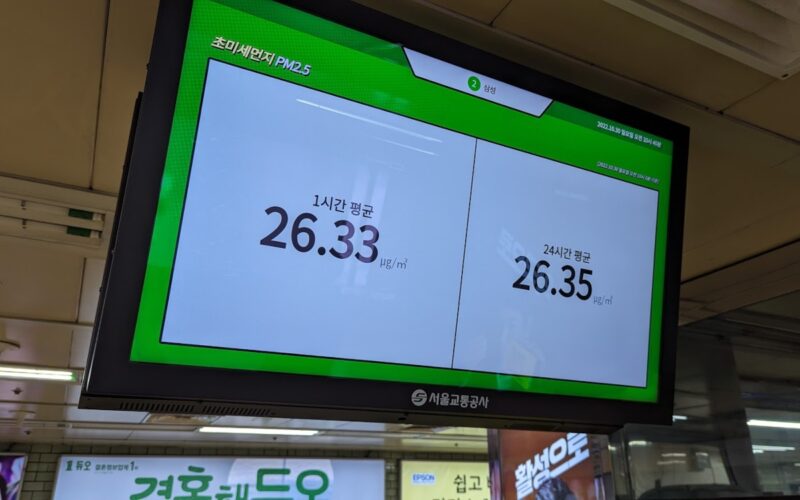

K-Pop fans phenomenon
K-pop bands (most prominent BTS) have become famous worldwide, but in no country is the hype as big as in the motherland. Male and female fans idolize their stars. This goes so far that fans regularly congratulate their stars with birthday DooH-campaigns. Through crowdsourcing fans collectively pool their pocket money, create and book often very kitschy digital posters starting at 1,500 Euros
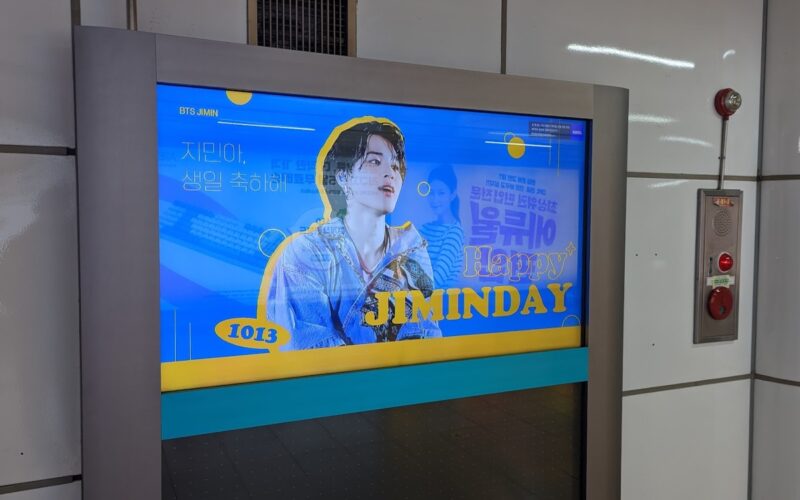
Until the pandemic, Seoul subway stations were full of fan campaigns. It’s a little quieter at the moment, but while we visited Seoul we also spotted some fan congratulations in the Seoul underground. Campaigns for a different business are completely missing now – the long-dominant campaigns of beauty institutes for plastic surgeries have been prohibited since the end of 2022. But Seoul’s metro remains a very lively and popular platform for DooH.

